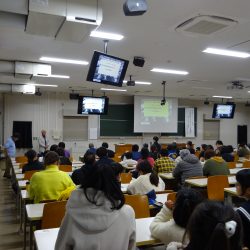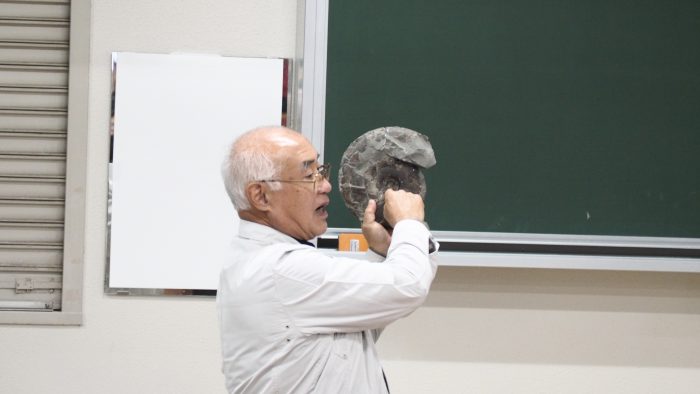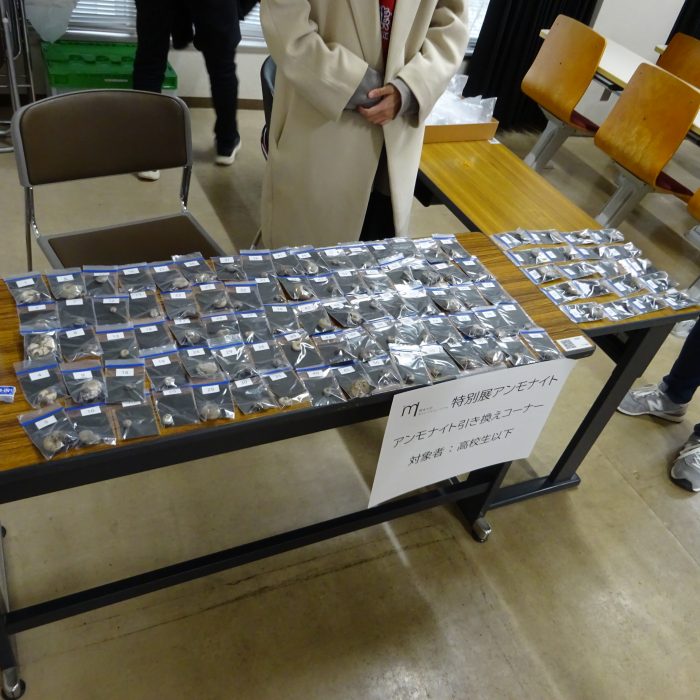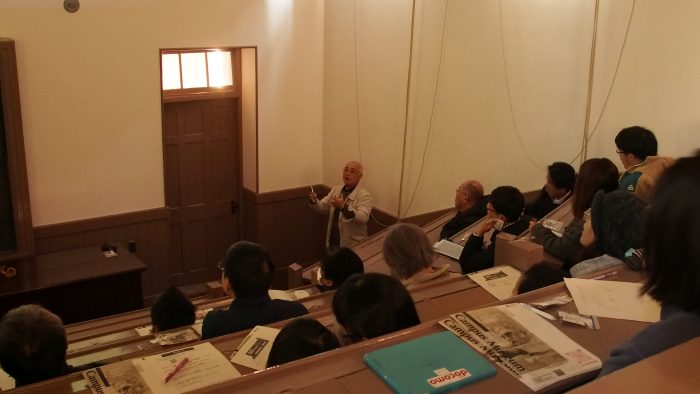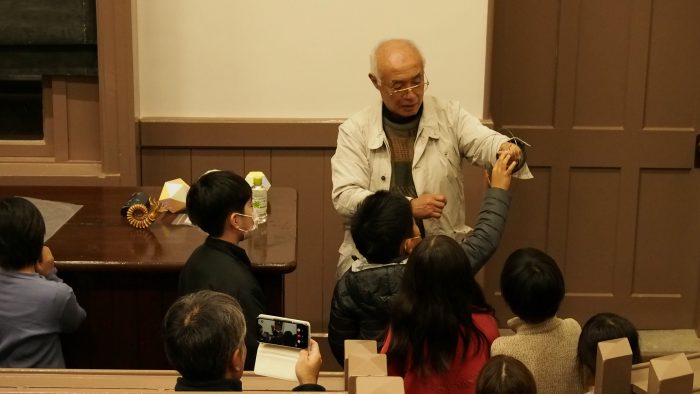- Home
- News & Event
- Special exhibition ammonite lecture was held!
Special exhibition ammonite lecture was held!
Currently, Kumamoto University is holding a special exhibition on ammonites (10/23-12/22) at The Chemical Laboratory of the Fifth High School, an important cultural property.
On Saturday, November 30th and Sunday, December 1st, a lecture was held by Professor Emeritus Haruyoshi Maeda of the Kyushu University Museum. Approximately 260 people, from preschoolers to the general public, participated in the two days and it was a great success.
The lecture on November 30th, “Exploring the mechanism of fossilization,” was not limited to ammonites but covered fossils in general, and detailed explanations were given on the fossilization process and its mechanism, allowing participants to experience the depth of paleontology. The Q&A session was very lively, with many sharp questions being asked that have yet to be answered. After the lecture, a long line of children formed to have Professor Maeda identify the actual ammonite specimens that were given as presents that day.
In the morning of December 1st, a lecture entitled “Do Ammonoid Remains Float or Sink?” was held, covering the topic of ammonites in general, and an interesting discussion was held on the conditions and processes that determine whether ammonoid remains float or sink. In the afternoon, a lecture entitled “Exploring the Shape of Paleontological Organisms- Introduction to Theoretical Morphology” was held, focusing on the specialized content of ammonites, and an introduction was given from the basics to the application of theoretical morphology on ammonite shell growth, including abnormal coiling. After the lecture, the participants moved to the special ammonite exhibition hall, where many enthusiastic participants listened to Professor Maeda’s explanations directly about the exhibits and asked questions.
In the questionnaire after the lecture, many participants commented that “The story of the process of becoming a fossil was interesting.” “He spoke in words that even children could understand, and the children listened with a smile and enjoyed,” and “It changed the way I look at fossils.”











